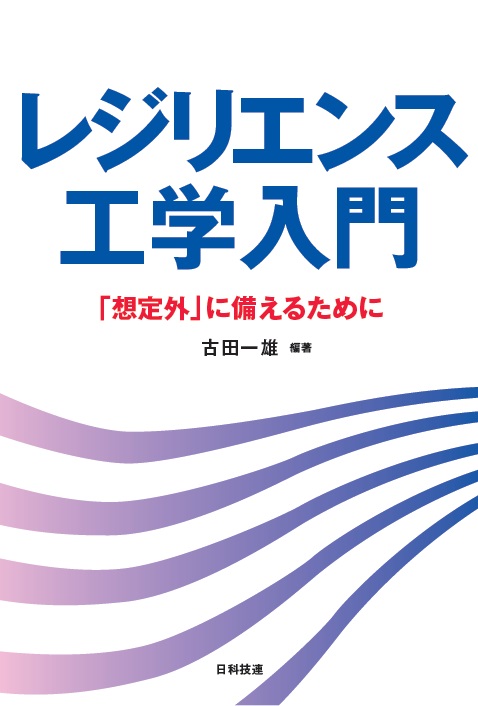
Title
Resilience Kohgaku Nyumon (Introduction to Resilience Engineering)
Size
160 pages, A5 format
Language
Japanese
Released
July, 2017
Published by
JUSE Press
Book Info
See Book Availability at Library
Japanese Page
In general parlance, resilience stands for elasticity, flexibility, or recoverability. However, the technical meaning of resilience is the intrinsic ability of a system to maintain its functionality by absorbing impacts of changes and disturbances. The term has been commonly used in Japan particularly after the Great East Japan Earthquake and the Fukushima-Daiichi Nuclear Power Plant Accident that occurred on March 11, 2011. After the disaster, the Basic Act for National Resilience was enacted, following which the Fundamental Plans for National Resilience both for the central and the local governments were established, with the intent of being revised periodically. The enhancement of national resilience has been one of the principal policies of the national government of Japan since March 2011.
Having experienced natural disasters, terrorism, and the global market crash in 2008, people have also recognized that various hazards that threaten our modern society may seriously impede the growth of the national economy and people's livelihoods. Both developed and developing countries are interested in assessing and enhancing national resilience. This is a major issue for the international community. Researchers, practitioners, and policy makers also address resilience in their work.
After the Great East Japan Earthquake, the faculty members of the School of Engineering, The University of Tokyo published a book discussing the role of engineering after the disaster. In the course of this project, the group that the author of this article belonged to addressed the importance of resilience engineering, which is an academic area that studies ways to implement resilience in socio-technical systems. We founded the Resilience Engineering Research Center in 2013 to promote research and education on resilience engineering in the School of Engineering. This book was published to present some outcomes from the research center as an introduction to resilience engineering.
An interdisciplinary approach is necessary to discuss resilience. It should not only cover technological areas on hardware artifacts, but also focus on human, social, economic, and legislative aspects. This book consists of several chapters discussing various topics, so that readers can understand how resilience engineering is related to various domains. Chapter 1 presents the history and the principal concepts of resilience engineering. Chapter 2 deals with resilience issues related to natural disasters. While Chapter 3 discusses the resilience of urban critical infrastructure, Chapter 4 discusses the resilience of energy systems, and Chapter 5 focuses on resilient financial markets. The final chapter discusses ways to manage investment projects in developing countries.
(Written by Kazuo Furuta, Professor, School of Engineering / 2018)



 Find a book
Find a book


